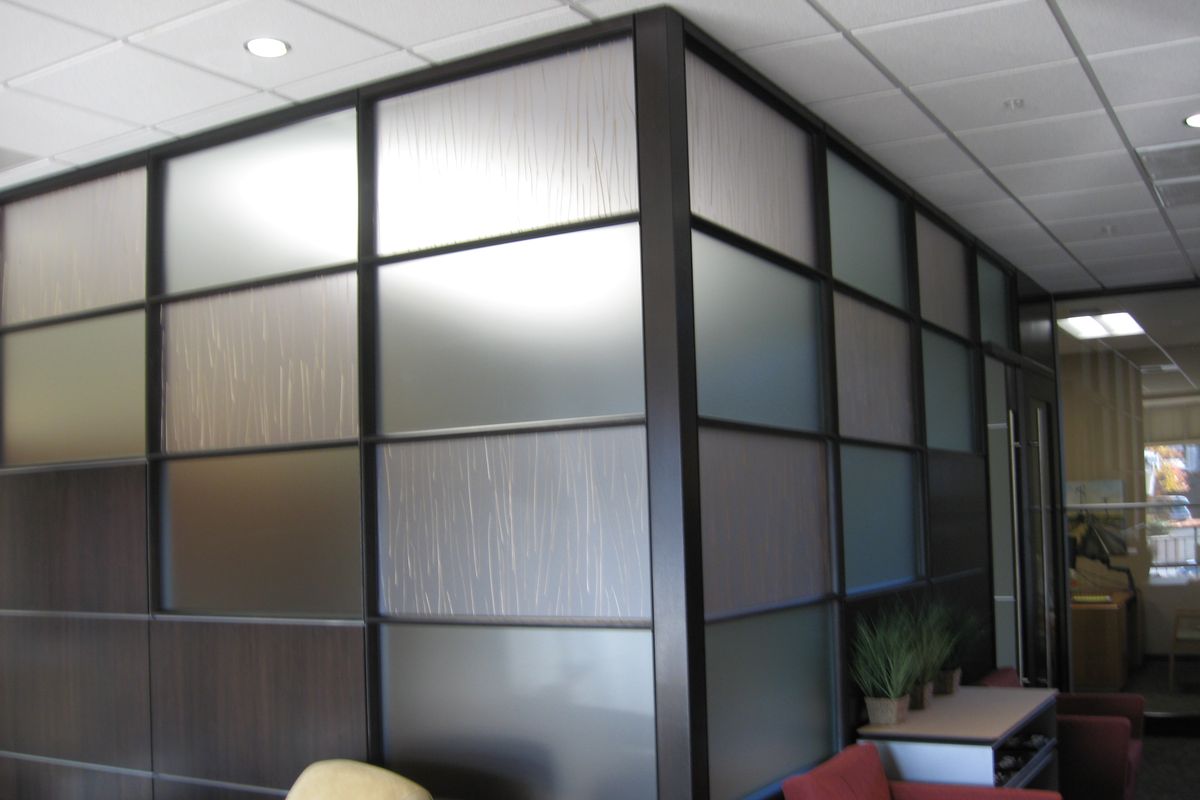The dirt on sustainable walls
High appeal for commercial, residential builders

Here’s the dirt on environmentally friendly interior wall construction.
More appropriately, here’s the DIRTT.
DIRTT is a sustainable, moveable-wall system developed by DIRTT Environmental Solutions, of Calgary, Alberta, and carried in the Inland Northwest by Spokane’s Contract Resource Group.
Walls made by DIRTT, short for Do It Right This Time, are constructed out of some recycled materials, said Mike Iannone, a Seattle-based sales representative.
“Sheetrock wall is the antithesis of sustainability,” Iannone said, citing that a large percentage of the garbage in landfills is construction debris. “This is a faster, cleaner way to build a wall.”
All of DIRTT’s materials are recyclable; all of the paints are water-based and low in volatile-organic compounds. The stains used on wood veneers also don’t include VOCs.
The main environmental benefit is that the walls can be moved easily or taken down without requiring a trip to a landfill.
The walls have aluminum frames that can be exposed, hidden or covered with a wood veneer. Plain wall panels are available, plus wood veneer, glass, back-painted glass, whiteboard or tack board, or more.
In the Inland Northwest, DIRTT has been used in commercial projects, said Gloria Saunders, architectural products specialist at Contract Resource Group. Some projects using removeable walls include the recently renovated Grant Building in downtown Spokane; the new Community Health Association of Spokane office, in the Liberty Building downtown; and the new Panhandle State Bank building in Sandpoint, among others. DIRTT has been installed in a few downtown condominium projects.
Owner Duane Wilson contends that the flexibility afforded by the moveable walls can be beneficial to homeowners and business owners. For instance, one could create a basement playroom next to a family room. Once the children grow up, the walls could be moved to make a larger family room or exercise room.
The cost of DIRTT walls varies depending on the materials used. Iannone said a plain wall without glass or wood costs about 25 percent more than a Sheetrock wall. However, a wall with a lot of glass panels or other higher-end products will be less expensive than a conventional wall that incorporates similar materials.
“On average, we’re within 10 percent of initial cost of a conventional build-out,” Iannone said.
If the wall has to be taken down just once, the cost difference has been eliminated. Demolishing a Sheetrock wall is costly, whereas tearing down a DIRTT wall has little or no cost attached to it.
Contract Resource Group’s professionals use a DIRTT-specific design software to build 3-D models of space with the moveable walls.
“The walls are completely customizable,” Iannone said. “Architects are excited about it.”
The software shows how much the wall system will cost—and recalculates the cost with each change.
Wilson said Contract Resource Group has carried DIRTT walls since fall 2005, just a few months after DIRTT was formed. He said Contract Resource Group had been looking for a new moveable wall system to carry when it came across DIRTT at a national trade show. He contacted the company and became one of its early carriers. Now, DIRTT has about 150 dealers in the U.S. and Canada. In addition to Spokane, it has dealers in Seattle, Portland and Boise now.
“With DIRTT, it brought a whole new mindset,” Wilson said. “It totally changed the game.”
Modular wall systems became prevalent in the 1970s, Iannone said, and furniture companies made the first generations of such products. Those early products received mixed reviews and weren’t always aesthetically pleasing.
DIRTT walls were developed by construction professionals.
With the new generation of wall systems, Wilson said. “You don’t have to apologize for having moveable walls now.”
Founded in 1991, Contract Resource Group markets itself as a “single source of office-environment solutions.” The company has had a Green element to it, Wilson said. In the early to mid-1990s, the company began buying old cubicles sets, refinishing them, and reselling them.
The company still has old cubicle systems that can be reconditioned, and it keeps the materials used for past customers to repair the reconditioned cubicles.
Wilson said the price point on newly manufactured cubicles has dropped so that they’re priced competitively with the reconditioned products. Still he sees value and benefit in the environmentally friendly alternatives—as do some of the company’s customers once they learn about the environmental benefits.
“Ninety percent of what we do is not selling,” Wilson said. “It’s educating.”
For more information on DIRTT, visit www.dirtt.net. For more on Contract Resource Group, visit www.contractresourcegroup.com.